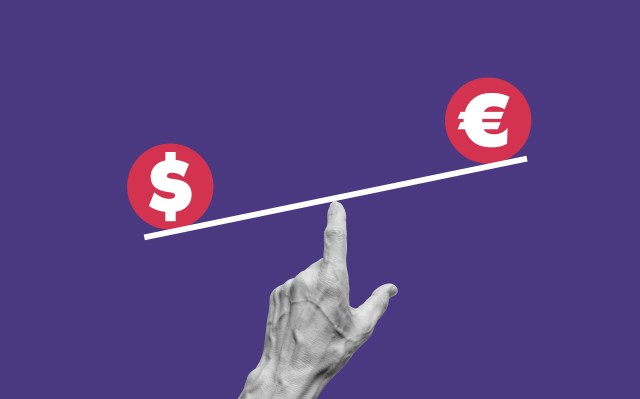When venture funding started to decline globally in the first quarter, Europe initially looked like an outlier. The region recorded strong Q1 numbers and was one of the few markets to see quarterly growth over the end of last year. But since the market reached its peak in January — at least for now — Europe’s funding has actually declined at a faster rate than other regions.
Europe’s venture capital decline was initially buried under its own numbers. Due to a particularly strong funding environment in the region this January, the pullback was masked in Q1 totals. The pace of the decline was notable, with the region seeing $13 billion invested in January, $9.3 billion in February and $8.9 billion in March, according to data from Crunchbase.
The slowdown continued in Q2 with April funding totals down 12.3% from March to $7.8 billion, and May down 16.7% from April to $6.5 billion. Based on figures from the first two months of the second quarter, June looks likely to continue the slide.
Europe’s funding decline this year has actually been slightly sharper than that of the U.S. Since the startup bull market started to plateau in January, the U.S. has seen monthly funding drop by 36.7% through the end of May. In comparison, Europe has seen funding decline by 50% over the same period.
Apart from the data, what’s particularly interesting is that Europe’s funding declines aren’t evoking the same level of concern that we’re seeing in the United States. It simply doesn’t feel like the European market is in nearly as much of a panic as the U.S. venture ecosystem is, despite seeing a stronger pullback.
Yes, there have been some layoffs at European startups. Swedish decacorn Klarna announced a 10% cut to its staff back in May, which resulted in 700 employees losing their jobs, while rumors were swirling that Klarna plans to slash its valuation during its next funding round. Quick-delivery companies Getir and Gorillas trimmed staff, too.
But these events pale in comparison to the rate of startup layoffs in the U.S. To compare, I did a quick count of company layoffs on industry tracker Layoffs.fyi and found that more than 115 U.S.-based startups have held layoffs since the beginning of 2022, compared with about 21 Europe-based companies.
That’s a pretty big difference.
A likely catalyst for the sentiment disconnect is valuations. Europe has traditionally had lower valuation averages compared to the U.S., and despite last year’s funding explosion, that didn’t change. Looking at late-stage valuations — the frothiest stage in today’s market — Europe had an average valuation of €285.6 million ($298 million) in 2021, compared to $753.3 million in the U.S., according to PitchBook.
And while some European founders may have been envious of the lofty valuations they saw in the U.S. last year, they probably aren’t experiencing the same indigestion now, and the funding pullback probably doesn’t feel as onerous as it does to U.S. startups.
It’s also possible that the knife just hasn’t fully fallen on the European market yet, or the second half of this year could show that European startups are more resilient than those in the U.S. We will wait and see.
